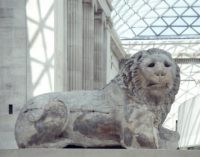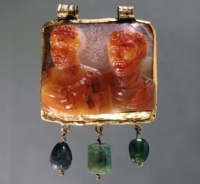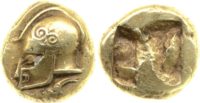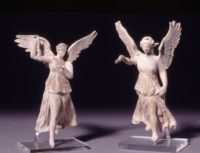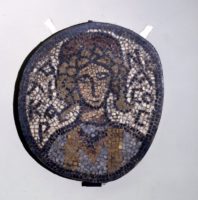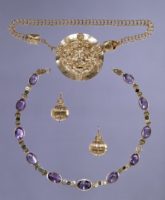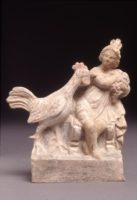The Lion of Knidos, Museum Description: Colossal marble statue of a recumbent lion; carved with inlaid eyes originally probably of glass, but now missing. Period: Hellenistic, circa: 2nd century BC. Excavated/Findspot: Knidos, Lion Tomb (Turkey, Aegean Region, Caria, Knidos Ancient City, Anatolia). Materials: marble, glass (eyes). Technique: inlaid (eyes) carved. Dimensions: Length: 2.89 metres Height: 1.82 metres. Location: Not on display (Great Court) Acquisition date: 1859, Discovered by Richard Pullan during Charles Newton’s excavations in 1858; removed by Robert Murdoch Smith; brought back on HMS Supply. British Museum is closed 24, 25 and 26 December and 1 January, but is open every other day of the year. Fast facts about the British Museum: Founded: 1753, Collection size: 8 million objects, Oldest object in the collection: Stone chopping tool (nearly 2 million years old).
[xyz-ihs snippet="British-Museum"]Busts of Two Emperors, Period: Roman, Circa: Late 3rd-early 4th century, Material: Chalcedony on gold. The museum is open to the public Tuesday through Sunday, 11:30 a.m.–5:30 p.m., except for federal holidays.
Electrum Greek Coin. Period: 6th c. B.C. circa: 521BC-478BC; Minted in: Phocaea (Asia, Modern Turkey,Marmara Region, Phocaea) Weight: 2.547 grammes. British Museum is closed 24, 25 and 26 December and 1 January, but is open every other day of the year. Fast facts about the British Museum: Founded: 1753, Collection size: 8 million objects, Oldest object in the collection: Stone chopping tool (nearly 2 million years old).
Terracotta Figure of Winged Nike Flying, wings raised, Period: Hellenistic 1stc(late) BC-1stc(early) (circa) Acquisition Date: 1893. Her left leg outstretched (perhaps coming down to land), her right hand raised and holding a small wreath, her left hand pulling at the drapery on her left thigh, wearing peplos belted high up under the breasts leaving her left bare, her left leg emerging from the garment at thigh level, wavy centrally parted hair drawn back into. Made in: Myrina, Anatolia (Modern Turkey) British Museum is closed 24, 25 and 26 December and 1 January, but is open every other day of the year.
Circular mosaic. Personification of the city of Halicarnassus. Period: Late Roman; circa: 4th c.; Excavated/Place: Halicarnassus, Modern Turkey, Aegean Region, Anatolia. Materials: stone. Dimensions: Height: 54.5 centimetres Width: 49.5 centimetres. British Museum is closed 24, 25 and 26 December and 1 January, but is open every other day of the year. Fast facts about the British Museum: Founded: 1753, Collection size: 8 million objects, Oldest object in the collection: Stone chopping tool (nearly 2 million years old).
Silver Coin, Period: 4 th century B.C. 330BC (circa); Museum Description: “Silver coin.(obverse) Head of nymph Sinope waring earring. (reverse) Eagle above dolphin.” Minted in: Sinope (Modern Turkey, Black Sea Region Sinop Province) British Museum is closed 24, 25 and 26 December and 1 January, but is open every other day of the year. Fast facts about the British Museum: Founded: 1753, Collection size: 8 million objects, Oldest object in the collection: Stone chopping tool (nearly 2 million years old).
Museum Description: “Pair of gold earrings in the shape of a half globe with a small disc above, decorated in relief with a female dramatic mask.” Period: Roman, circa: 2nd century A.D. Made in/Findspot: Miletopolis, Modern Turkey, Aegean Region, Anatolia. Dimensions: Height: 3.81 centimetres. British Museum is closed 24, 25 and 26 December and 1 January, but is open every other day of the year. Fast facts about the British Museum: Founded: 1753, Collection size: 8 million objects, Oldest object in the collection: Stone chopping tool (nearly 2 million years old).
Terracotta figure of a boy with a cock, Period: Hellenistic, 1th c. BC. (circa) Material: Terracotta. Boy sprawling back across a low bench with finely modelled legs, leaning to the viewer’s right, both hands holding a big bunch of grapes out of the way of a very large predatory cock approaching from the left. Excavated: Myrina Ancient City, Anatolia. (Modern Turkey, Aliaga, Izmir) Acquisition date: 1891. British Museum is closed 24, 25 and 26 December and 1 January, but is open every other day of the year. Fast facts about the British Museum: Founded: 1753, Collection size: 8 million objects, Oldest object in the collection: Stone chopping tool (nearly 2 million years old).


